The Bell Helicopter design, which is
called the V-280 Valor, is an advanced tilt-rotor design that is based
upon technology similar to the Bell-Boeing V-22 Osprey
The Sikorsky-Boeing entry, called the SB-1 Defiant, is a compound helicopter design with co-axial rotors and a pusher-propeller. dailymail
Two
teams - Sikorsky-Boeing with their Defiant, and Bell
Helicopter-Lockheed Martin with their V280, are also vying for the
lucractive contract to create a manned version of the 'supercopter'.
Both are set to take off for the first time next year in the final stage of the battle to replace the Black Hawk.
The
two prototype aircraft will be built and flown as part of a project
called the Joint Multi Role Technology Demonstrator Air Vehicle, which
will then inform the Army's Future Vertical Lift (FVL) program to
replace the long-serving Sikorsky UH-60 Black Hawk and Boeing AH-64E
Apache.
The FVL program will also inform the US Navy's MH-XX program to replace the MH-60 Seahawk.
Bell revealed this week it believes it's entrant could enter service in 2024.
'There's
no real technology that needs to be further developed for us to be able
to design and develop an aircraft that meets those requirements,' said
Vince Tobin, Bell's vice president of advanced tiltrotor systems,
according to DefenceOne.
'Our
big push now is that, after we fly this and prove out that we can build
this aircraft, that we are ready to go into engineering and
manufacturing development.'
The
Sikorsky-Boeing team is also hoping to fly in 2017, said Doug Shidler,
Sikorsky's program director for its Joint Multi-Role tech demonstrator.
'The
intent of the JMR TD effort is to maximize the knowledge gain and risk
reduction toward an anticipated Future Vertical Lift acquisition
program,' said Dan Bailey, the Army's JMR/FVL program director when the
two finalists were announced.
Two
other teams led by Karem Aircraft and AVX Aircraft were not selected
for continued development, but the service is still interested in their
technologies.
'The
Army will seek to continue technology development efforts with those
teams based on resources and opportunities,' the service said.
The
Sikorsky-Boeing entry, called the SB-1 Defiant, is a compound
helicopter design with co-axial rotors and a pusher-propeller.
The
Bell Helicopter design, which is called the V-280 Valor, is an advanced
tilt-rotor design that is based upon technology similar to the
Bell-Boeing V-22 Osprey.
The new tilt-rotor is smaller, faster and much more manoeuvrable than the Osprey and has a top speed of over 300 knots.
The Future Vertical Lift (FVL) is a program to develop a family of military helicopters for the United States Armed Forces.
The
Bell Helicopter design, which is called the V-280 Valor, is an advanced
tilt-rotor design that is based upon technology similar to the
Bell-Boeing V-22 Osprey.
The Bell V280 program completed its final design and risk review period in August, and construction has already begun. dailymail
Four different sizes of aircraft are to be developed, and they will share common hardware such as sensors, avionics, engines, and weapons.
It
will eventually lead to replacements for the Army's UH-60 Black Hawk,
AH-64 Apache, CH-47 Chinook, and OH-58 Kiowa helicopters.
The
precursor for FVL is the Joint Multi-Role (JMR) helicopter program,
which will provide technology demonstrations planned for 2017.
Chris
Gehler, director of Bell Helicopter's advanced tilt-rotor systems, said
the V280 program completed its final design and risk review period in
August. Spirit Aerosystems has completed building the fuselage in
Wichita, Kansas, and shipped it to Amarillo just before AUSA.
'This is real. The aircraft is coming together now,' Gehler told Defense News.
Spirit Aerosystems has completed
building the fuselage in Wichita, Kansas, and shipped it to Amarillo
ahead of flight tests in 2017. dailymail
THE DEFIANT-1
The Sikorsky-Boeing entry, called the SB-1 Defiant, is a compound helicopter design with co-axial rotors and a pusher-propeller.
The design will have a cruise speed of 250 kn (290 mph; 460 km/h), but less range due to using the 'old' T55 engine.
The
SB-1 will be quick and nimble, with fast acceleration and deceleration,
side-to-side movement, and hovering with the tail up and nose down.
The Defiant demonstrator will be powered by the Honeywell T55, which powers the CH-47 Chinook.
It will be slightly modified to better operate at slower speeds down to 85% rpm.
'We've
got all kinds of pieces and parts, different technologies and things
that are yielding today and starting to flow to Amarillo.'
'About
this time next year,' he said, the aircraft will look ready to fly and
the team will be running pre-flight checks, ground runs, shake tests and
other reliability activities.
The
U.S. Army-led Joint Multi-Role Demonstrator (JMR-TD) program is the
science and technology precursor to the Department of Defense's Future
Vertical Lift program expected to replace 2,000 to 4,000 medium-class
utility and attack helicopters.
The
U.S. Army and Department of Defense are seeking leap-ahead capabilities
and have identified a speed of 230+ knots as a key discriminating
capability.
The U.S. Army's current helicopter fleet cruises at 140 knots.
The
Bell Helicopter design, which is called the V-280 Valor, is an advanced
tilt-rotor design that is based upon technology similar to the
Bell-Boeing V-22 Osprey.
The new tilt-rotor is smaller, faster and much more manoeuvrable than the Osprey and has a top speed of over 300 knots.
The first flight of the next generation tiltrotor is scheduled for the second half of 2017.
The
V-280 tiltrotor will provide unmatched speed, range and payload, along
with unmatched agility at the objective, Boeing says.
The first flight of the next generation tiltrotor is scheduled for the second half of 2017. dailymail
Bell-Lockheed Martin V-280 Valor
Sikorsky-Boeing SB-1 Defiant
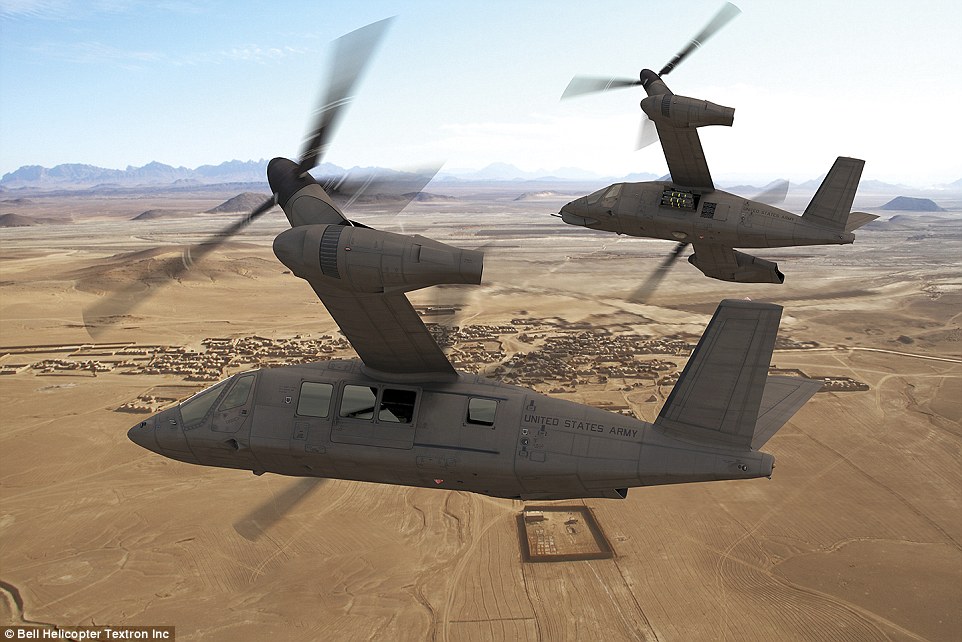
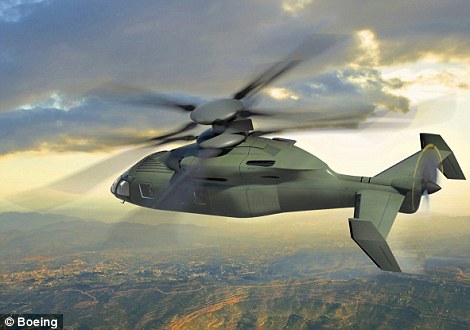
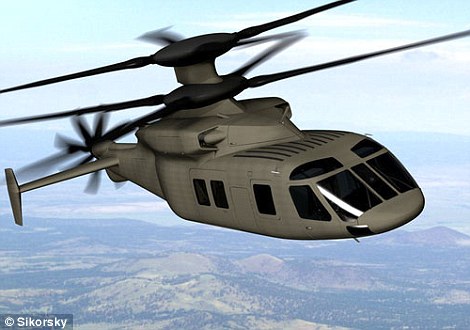
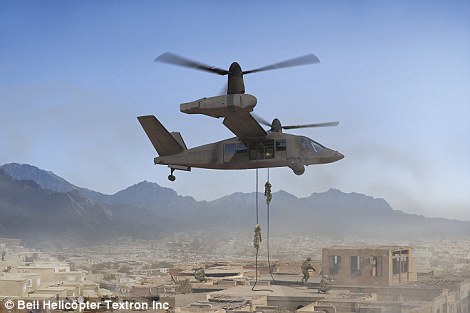
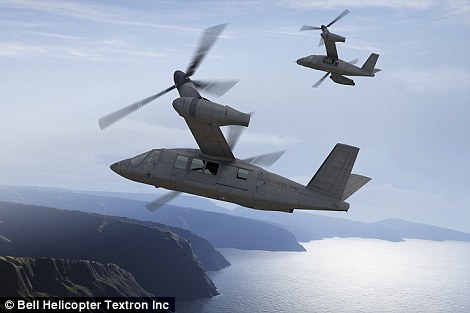
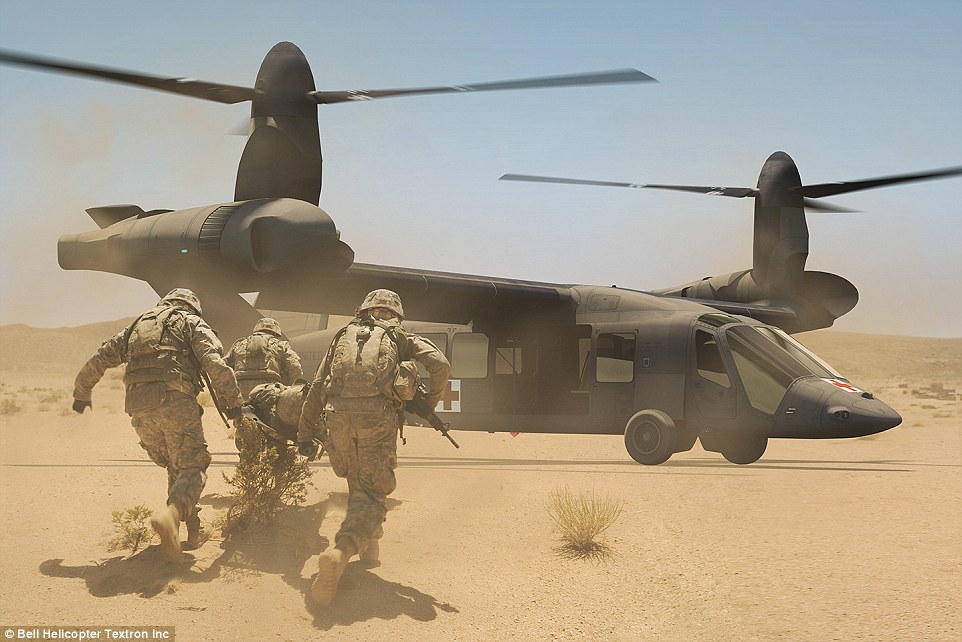






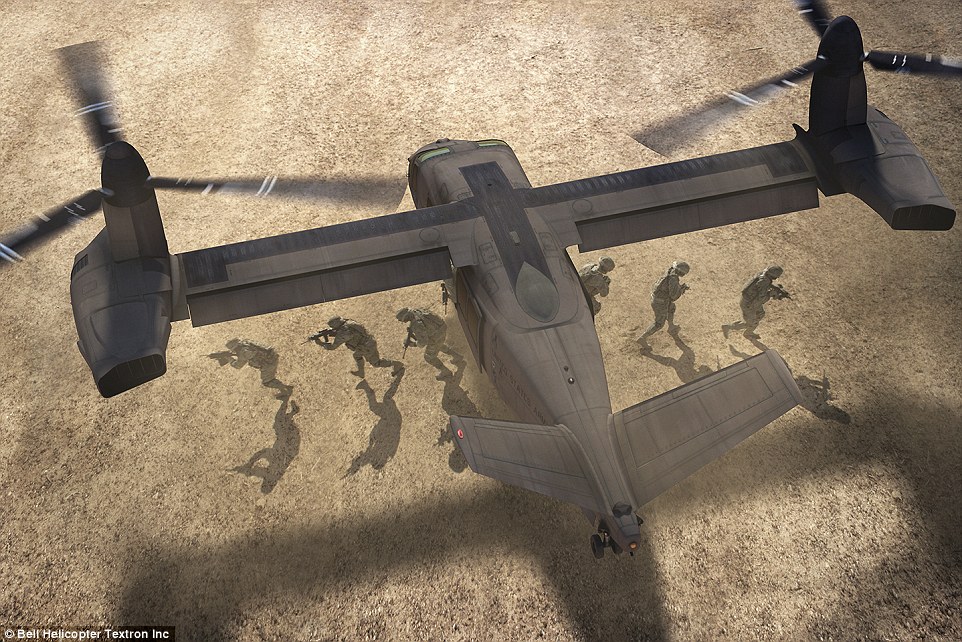
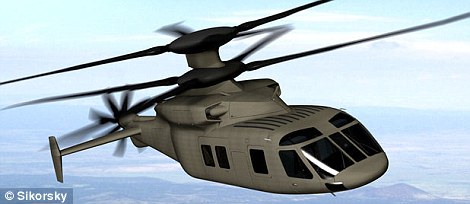
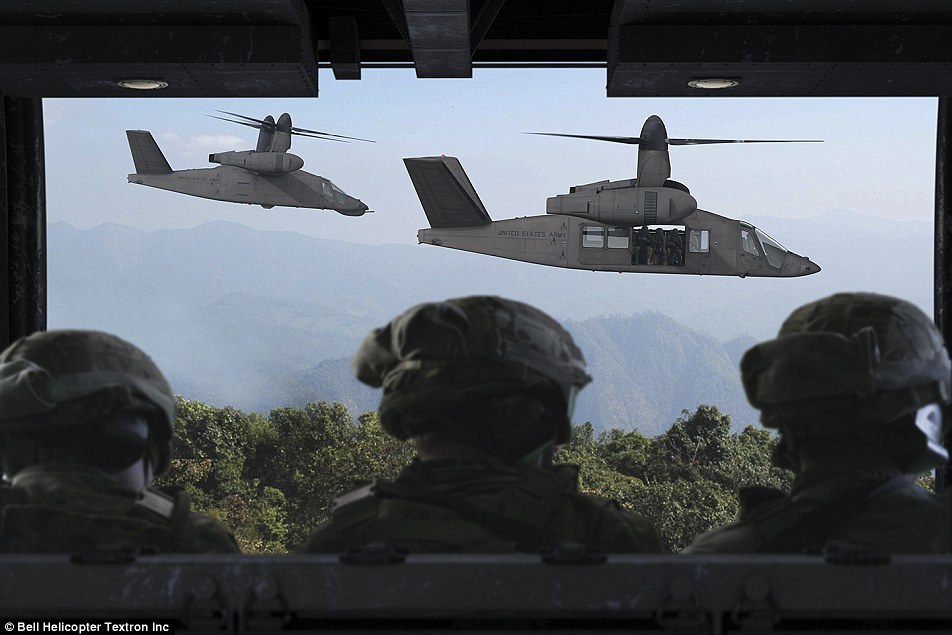
Post a Comment Blogger Facebook Disqus
EmoticonClick to see the code!
To insert emoticon you must added at least one space before the code.